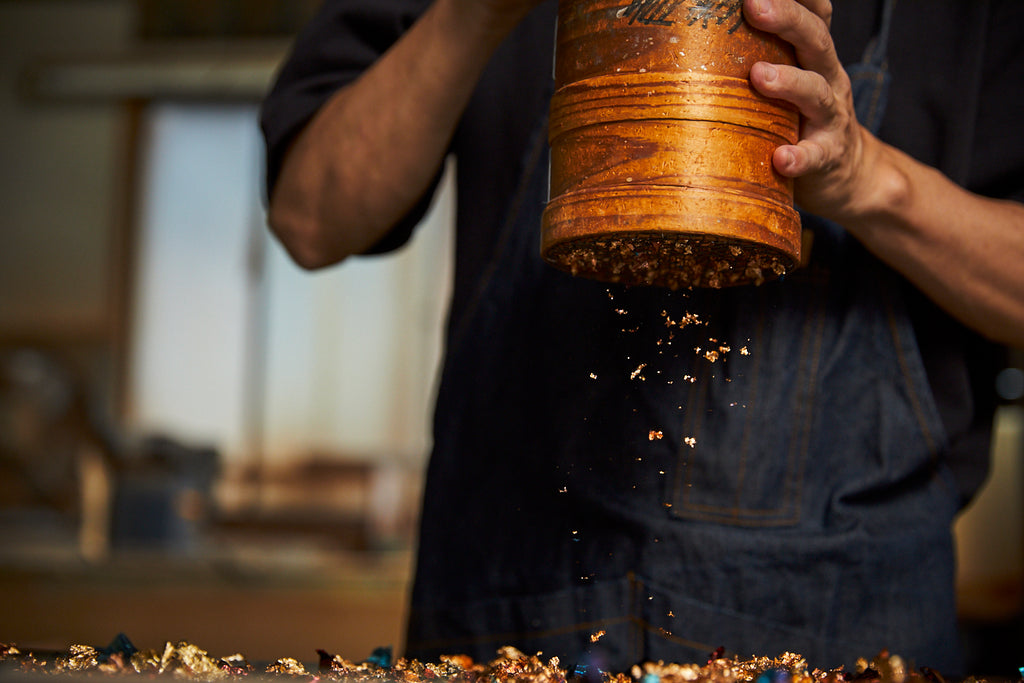We talked to Kohei Murata of the complex workshop, who continues to create works that match modern life while inheriting the Nishijin -fi weaving technology in Kyoto.
[1] About the trigger of pursuing the path of crafts, the background of your own, the history and formation of the workshop

It is Kohei Murata, a traditional craftsman of Nishijin -mi, designated by the Minister of Economy, Trade and Industry, a traditional craftsman designated by the Minister of Economy, Trade and Industry, and Kohei Murata.300The music workshop, which is still supported and protects the technology that is said to have been developed more than a year ago, is still supported and protected. It was founded in 1989.
After graduating from college, Mr. Murata, who graduated from university, has been in the world of Nishijin Orien, a family business, after working in apparel -related work to learn the basic knowledge of the fashion industry, the flow, and especially the distribution department. 。
"In a harsh environment surrounding Nishijin Ori -Sangyo, I was also looking for potential in a new field due to my father's influence of new challenges to communicate the technology of drag foil to the world. It is manufactured in a traditional way. The obi of the Nishijin Ori is20With the above manufacturing process, it is completed by craftsmen who have advanced technology. With the inheritance of the technology, I think that it can contribute as a foil shop to convey the essential ideas of crafts inherited over a long time. "
The music workshop creates a wide range of genres, such as art, design, interiors and fashion, centered on traditional crafts, and creates works that are in line with modern life, and has a innovative design for domestic and foreign markets. I am suggesting.
[2] What you are working on and conscious to stimulate your five senses.
Mr. Murata is the motto of the manufacturing of craftsmen in various fields involved in the same traditional industry, as well as as many works as possible, such as art, design, interior, and fashion.
"In the world of traditional crafts that have been focused on using" beauty "represented by Nishijin Fori as a high -end concept, we believe that free and flexible ideas that are not bound by stereotypes will build the future. I will do it. Encounter with people in various fields will evolve yourself and give the power to challenge new things. "
It seems that he is looking for the original value of his own manufacturing and the meaning of the richness of his own manufacturing by creating a wide range of fields while focusing on crafts.
[3] What you value and commitment in the work production, what you want to convey through the work and what you want to fulfill

Pulling foil is one of the materials that have been used for high -end products in Nishijin weave since ancient times, and is a technique for enhancing the textile pattern of textiles and giving a three -dimensional effect. Made a pattern on Japanese paper colored with lacquer, etc. with gold and silver foil, etc., and cut it like a thread at a cut shop specializing in cutting. Unlike the yarn, the pulling foil is on the front and back, hooks one by one at a time, and pulls through the warp by pulling it. It seems that the name of the foil was born from this operation. The biggest feature of foil is that it has a completely different expression depending on the light source and the viewing angle.
"Gokkin Kinki, which overlaps the pattern to the five layers to give a depth and three -dimensional effect, is one of the typical dramatic foil that has been inherited for the three generations of parents and children. The material has changed and technology has evolved. However, in the production process, which is the essence of crafts, I think that the thoughts of the predecessors continue to dwell with the technologies that have been handed down. "
The fusion of traditional techniques and new designs that have been inherited for a long time creates new values. "The aesthetics of people will be updated, which will create the next tradition," says Murata.
[4] What we are trying to inherit traditional technology and culture and what we want to challenge in the future

Mr. Murata applies the technology of driving foil, which is the material of Nishijin weave, and is trying to manufacture things in different fields such as art works. One of them is the production of chopsticks. Chopsticks produced by applying precious foils and five -colored gold techniques inherited from the predecessor bring beauty in the daily life of a dining table.
"Now, what I can do is to convey the charm of Nishijin weave while protecting the kimono culture. I hope that my challenge will become a new tradition and lead to revitalization of the entire production area."
Murata has expanded the potential of dragfill with free and flexible ideas, and continues to build the future of traditional crafts.
